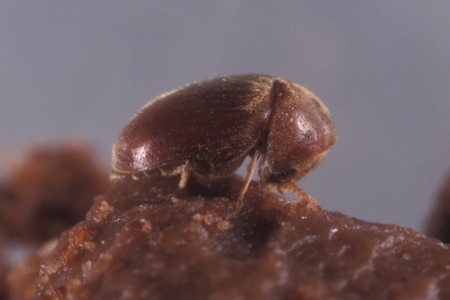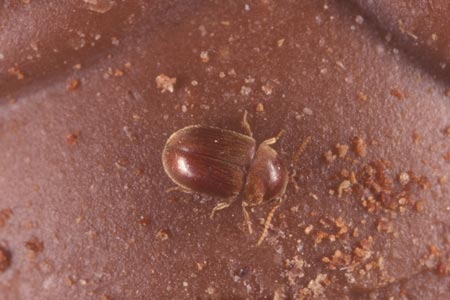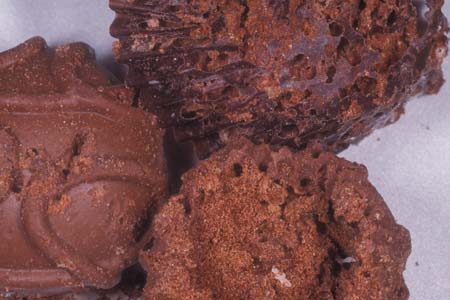Active Seasons




Appearance and Size Facts of Cigarette Beetles
Cigarette beetles can cause big problems in south Florida homes. They infest and consume organic materials, such as flour, pasta, cereals, tobacco products, dried flowers, spices, and books. In addition to contaminating and damaging stored items, cigarette beetles rapidly reproduce, making them difficult to eliminate.
Cigarette beetles have fine hairs that cover their bodies, giving them a velvety look. They also have a downward-bent head and clubbed antennae. If left unattended, cigarette beetles can do much damage to your stuff despite their small size. Early identification and pest control services from Hulett Environmental Services are crucial to preventing chaos in your home and helping protect your valuable belongings.
Identifying Cigarette Beetles From Other Beetles
If you notice their specific characteristics, it’s easy to distinguish cigarette beetles from other beetles. Cigarette beetles usually measure around 2 to 3 millimeters in length and have an oval-shaped body. They’re typically reddish brown or light brown, with a glossy appearance. It’s good to be attentive to these details to manage pests effectively.
We offer beetle control for cigarette beetles in the following locations and their surrounding areas:

Behavior and Habitat of Cigarette Beetles
Cigarette beetles have particular behaviors and habitats that cause homeowners problems, including infesting areas such as pantries because they thrive in warm, humid environments. Female cigarette beetles lay eggs on suitable surfaces to reproduce, and the larvae feed on infested materials, causing potential damage.
In addition to processed foods, cigarette beetles can chew through packaging and infest pet food, cereals, nuts, raisins, and seeds. To manage cigarette beetle infestations effectively, identify them immediately and take proper pest control measures.

Signs of Infestation of Cigarette Beetles
The key to implementing timely pest control measures is detecting signs of cigarette beetles. Adult cigarette beetles chew through packaging materials like cardboard boxes or plastic bags, leaving tiny holes or tunnels in them. Another sign is damaged or contaminated food products like grains, especially those susceptible to infestation.
Cigarette beetles may sometimes be visible in dark corners or cracks near the infested areas. In addition, you could also spot their larvae in your home. They look like worms and are small and white. By watching and identifying these signs, you can prevent further damage and eliminate cigarette beetles.

Tips for Prevention of Cigarette Beetles
You can prevent cigarette beetle infestations by inspecting food goods before purchasing them, keeping food in sturdy and sealed containers, sealing cracks along walls, floors, and ceilings where the cigarette beetles can get in. Additionally, keeping cigarette beetles at bay requires regular vacuuming and cleaning of food storage areas.
Getting Rid of Cigarette Beetles
If you suspect a cigarette beetle infestation in your home or business, you should deal with it immediately. Finding the source of cigarette beetles can be a challenge, making DIY difficult. Contact a professional pest control company like Hulett Environmental Services for the best results. It’s our job to get rid of cigarette beetles and prevent future invasions by identifying all infested areas and using the proper methods. You get the best chance of success if you deal with an infestation immediately before it spreads.
Effective Cigarette Beetle Control Solutions
Cigarette beetle infestations can be frustrating, but professional pest control can help. Instead of trying to handle the issue yourself, just call Hulett! Our training enables us to identify infestations, treat all affected areas, and prevent future infestations. If you call us as soon as you notice a problem, you’re more likely to get rid of cigarette beetles and avoid damage. Cigarette beetles don’t have to cause headaches if treated right away.



